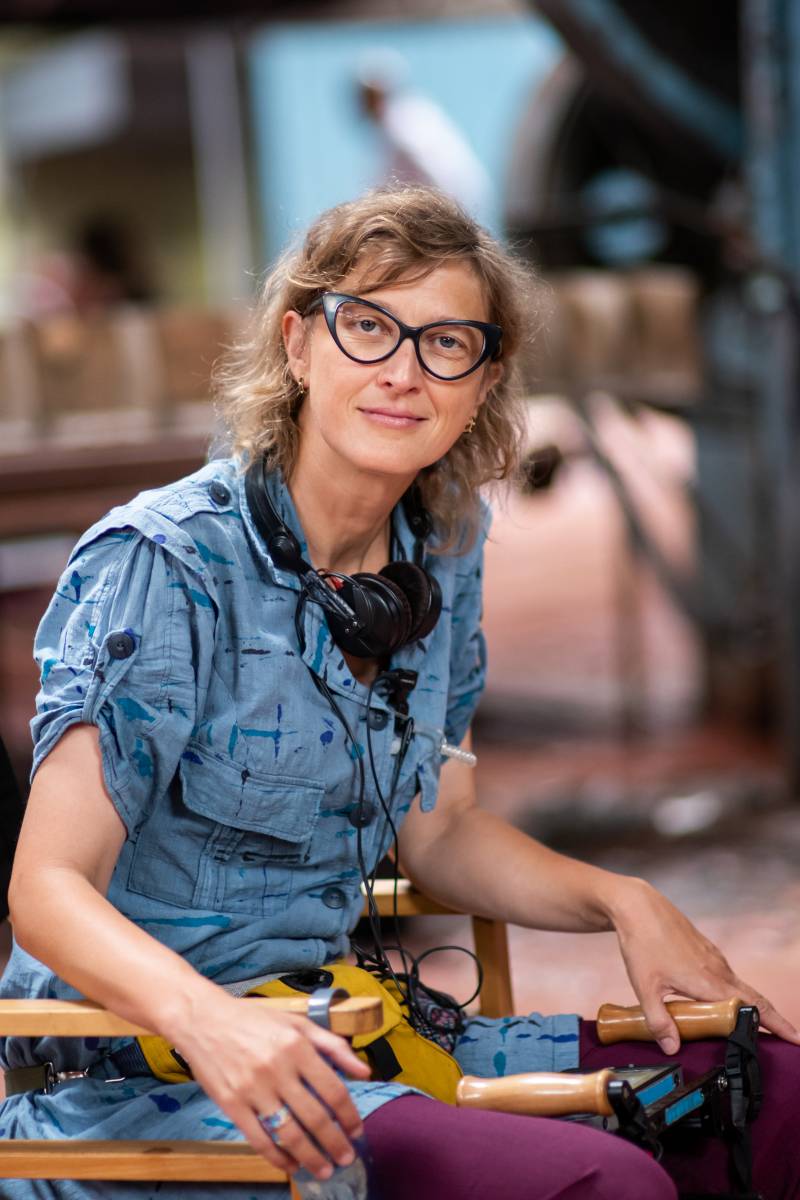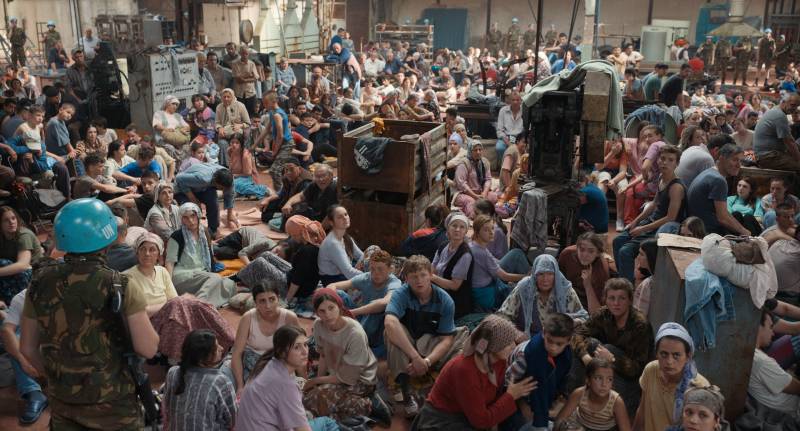Filmmaker Jasmila Zbanic was a 17-year-old student living in Sarajevo with her family when the Bosnian war began in April 1992. As clashes over Bosnia’s referendum for independence first started, she says nobody imagined there could ever be a full war. “It started like [the] riots on Congress in January in [the] U.S. … I was happy when this happened because I thought what a cool thing not to go to school and have [the] whole city stop,” she says.
Instead, the ensuing siege of Sarajevo became part of the longest and bloodiest armed conflict in Europe since World War II. The experience marked Zbanic as a young woman—and as an artist—and her award-winning films have explored the legacy of war with a particular focus on women’s stories. Her latest film Quo Vadis, Aida? is among the nominees for this year’s Oscars for Best International Feature and it dramatizes the genocide of more than 8,000 Bosnian Muslim men and boys in Srebrenica in July 1995.
Journalist Christiane Amanpour, who covered the war for CNN, says she was “gobsmacked” by the film and it took her right back to the asymmetry of that conflict. “I was a young woman in my first real war and it took me several weeks, maybe a couple of months, to understand that in Bosnia there was no question that there was an aggressor, clearly defined and there were victims, clearly defined. The aggressors were white Christians who were the Serbs and the Bosnian Serbs. The victims were white European Muslims and the aim of the aggressor was exactly the definition of genocide: to destroy a community in part or in whole based on their ethnicity.”
Zbanic spent years researching the real-world politics and mass violence that unfolded in Srebrenica but she says she knew she was also creating a piece of cinema. “Media are dealing with numbers or shocking images but cinema allows us to identify with characters and spend time with them and be with their decisions, having [the] feeling that it’s in real time,” she says.
Her version eschews on-screen violence and widescreen battles for a more immersive and intimate experience than traditional Hollywood war films. “I just respect [the] audience very much and I know that [an] audience can imagine many things so I didn’t show blood and violence in an obvious way. I really think we don’t have to see men in blood to know that they were all killed.”

Zbanic tells the story of Srebrenica through Aida, a former teacher working as a translator for the United Nations forces. Played by acclaimed Serbian actress Jasna Duricic, Aida rushes between meetings and military negotiations as Srebrenica is ethnically cleansed, her own family joining the thousands of refugees outside the gates of the U.N. base seeking protection. Despite her privileged status as a United Nations employee, she is unable to ensure her own family’s safety. Zbanic says the U.N. betrayed the people it sought to protect and Aida is a tragic character placed at the intersection of that impossible position. In a landmark 1999 report completed under then Secretary General Kofi Annan, the United Nations acknowledged its systemic failures to intervene and protect civilians in Srebrenica.

9(MDAxOTAwOTE4MDEyMTkxMDAzNjczZDljZA004))

